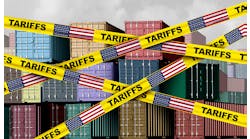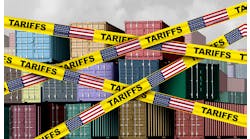A few years ago I purchased a sofa from a well-known furniture store. After handing over my credit card I was told that the lead time for my sofa was going to be 12 weeks. I was shocked and asked why it took so long.
“We have to order it from China,” was the answer from the sales assistant.
“But it only takes a ship two weeks to travel from China to Australia [where I live], so what is happening for the other 10 weeks?” I asked her.
Naturally the sales assistant in the furniture store could not answer my question and thought I was a bit strange to even ask it.
“Everyone knows that things take a long time to come from China!”
So why are the lead times from your overseas suppliers so long and why does it matter?
Why Lead Times Matter
In the case of my sofa, it is clear why a 12-week wait (it actually ended up taking 20 weeks!) might matter. However, many businesses might say, “Who cares? I am paying half the price so I am prepared to wait.”
In fact, long lead times are the driver of many of the evils that bedevil supply chains. The longer the lead time is, the more inventory you will need to hold and the greater the risk that you will have shortages of the things you really need. This is because the longer the lead time, the more likely it is that the product you thought you needed when you ordered it is no longer the product you need when it arrives.
Supply Chain Software is Not the Solution
Many companies try to overcome this problem using ERP systems, demand management tools and other advanced software. However, no matter how advanced your forecasting software, humans’ ability to forecast the future is very limited, and accurately forecasting down to the item level months in advance is simply not possible.
Why Are Lead Times So Long?
I am frequently surprised by how few people ever ask this question about their supply chain. Companies frequently seem to accept long lead times as a given fact. In most cases geography is not the problem. The time to ship the goods from your supplier on the other side of the world to you is usually only a fraction of the total lead time. For example, to ship goods from China to the U.S. or Europe only takes three to four weeks, yet lead times from order to delivery can be 20 weeks or more (and are rarely less than 12 weeks). Therefore, factors other than geography are driving the lead time. There are many of these factors, including:
• Delays processing orders (at your end and the suppliers’ end).
• Delays associated with arranging payments.
• Suppliers not ordering raw materials until they receive your purchase order—which means their supplier’s lead time is added to their own lead time.
• Suppliers batching up orders to run them together in a large run.
• Delays in arranging shipping.
• Consolidation delays (where goods wait to be consolidated with other goods into a single shipment).
• Delays at crossdocks and ports.
• Short-term capacity issues at your suppliers.
• Poor communication and errors.
Unlike geography, which you can do nothing about (unless you reshore the product), all these other factors are controllable. In other words, the majority of the lead time from your overseas suppliers is caused by factors that can be changed.
What Are the Steps to Reduce Lead Time?
To create a lean supply chain with the minimum lead time you need to apply lean thinking. Therefore, you need to create a value stream map of your supply chain to understand the drivers of your lead time and to design a future state map to reduce the lead time. The steps in doing this are similar to those involved in value stream mapping any other manufacturing or business process:
Form a cross-functional team. Value stream mapping is a team sport! A lot of the learning comes from the various team members involved in your supply chain understanding the whole supply chain and learning what is going wrong and what can be improved. It can also be great to actively involve suppliers as they will bring a completely different perspective to the process.
Define the value stream. For the supply chain this usually means a supplier or group of suppliers that are located in a similar part of the world and supply a similar type of product. Mapping diverse types of products or multiple geographic routes usually means you need to do more than one value stream map.
Map the current state. This involves mapping the flow of product from the supplier to you and the flow of information between you and the supplier. At the minimum, it will involve the product flow from your supplier’s door to your warehouse and information flow from raising an order through your supplier to receipting the goods. However, the further you can extend the value stream upstream into your suppliers’ supply chain and downstream into your distribution network, the better result you can get. You should try to break down the steps in the supply chain and analyze a range of past orders to see where the lead time builds up.
Design the future state. This involves a structured step-by-step process to improve the flow and design out the waste. Simple lean supply chain techniques such as pull and leveling cost very little to implement and can have a big impact on lead times. The future state map will also define improvement metrics and set clear improvement targets for those metrics. (Click the DOWNLOAD button at the end of this article to see an example of an extended value stream map for supply of fire extinguishers from China to Australia, reprinted from my book, On Time In Full.)
Develop an action plan. The final step in supply chain value stream mapping is to develop an action plan that sets clear accountabilities and timelines to deliver the improvements.
The value stream map will provide you with some practical ways to improve your supply chain, but the challenge is often locking these improvements in and building on them.
The Importance of a Good Service Level Agreement
Most supply contracts I see focus on two things: price and how to cancel the contract! To get the best results from your supplier you need a document that outlines the way in which you are going to do business together. This will include things such as the process for ordering and shipment, inventory, obsolescence, mutual accountabilities and key supply chain metrics (including lead time).
The service level agreement does not need to be a legal document, but is instead more likely to be a procedure between you and your supplier that includes agreed-upon performance metrics and targets along with regular reporting on those targets.
What Kind of Improvements Reduce the Lead Time?
Your value stream map will identify a range of improvements that are unique to your business. Having mapped many supply chains over the years, we have seen a number of ideas that can be applied across many businesses. These include:
Synchronizing ordering, manufacturing and shipping with known shipping schedules. Ships run to published schedules like buses or planes. Therefore, locking in on a particular shipping schedule with a single shipper can eliminate delays waiting for a ship. It can also enable you to negotiate better rates and ensure availability of space for your container.
Leveling your demand. If you can level your orders on your suppliers and become more predictable, it makes you easier to supply and suppliers can usually respond quicker because they are prepared.
Allowing suppliers to order materials against your forecast. This requires some business rules to ensure they don’t over-order and to make sure you don’t shirk your responsibility to take stock purchased on your behalf.
Stop playing games with payment terms. Financial gurus love to try to free up cash by taking other people’s cash with extended payment terms. This often creates friction with suppliers and makes them reluctant to act until the last minute. As a result, lead times are extended and inventory increased—thwarting the efforts to reduce working capital anyway. So, pay promptly and reliably and you will probably get better service and shorter lead times.
Get your supplier to create a dedicated line. If you purchase a lot of product from a single supplier, it may be possible to get them to set up a line dedicated to your product. This avoids your product being delayed by a big batch being made for someone else.
Take Control of Lead Times
Long supply lead times are something that you can change. In our experience a lean supply chain can halve your lead time. Shorter lead times mean that you need less inventory, less risk of shortage, reduced quality risk and reduced risk of obsolescence. Follow our simple tips to reduce lead time in your supply chain and see the benefits you gain.
Tim McLean is principal of TXM Lean Solutions, a lean consulting firm. His two books—Grow Your Factory, Grow Your Profits: Lean for Small and Medium Sized Manufacturing Enterprises and On Time In Full: Achieving Perfect Delivery with Lean Thinking in Purchasing, Supply Chain and Production Planning—have been published by Productivity Press.
To view the Simplified Future State Map of a Fire Extinguisher Supply Chain, click the DOWNLOAD button below (pdf).









